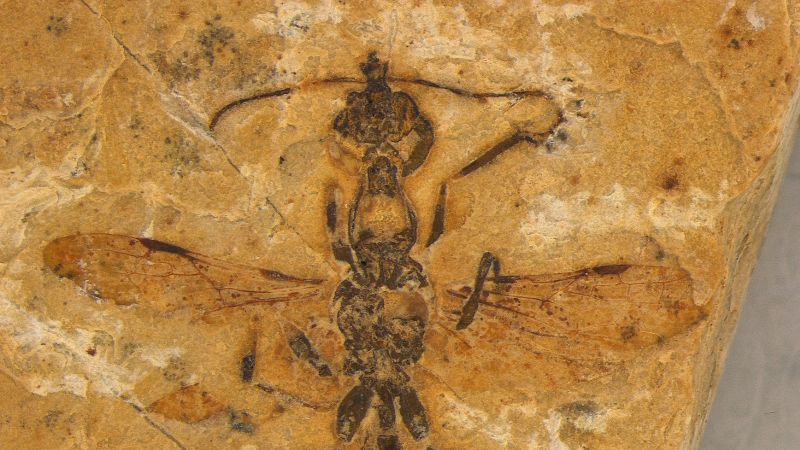A recent significant discovery has emerged from Brazil, where researchers unearthing overlooked fossils in a museum collection have unveiled the oldest known ant specimen. This remarkable breakthrough was reported by researchers from the Museum of Zoology at the University of São Paulo, with Anderson Lepeco leading the study. The fossil dates back to approximately 113 million years ago, placing it long before previously recognized ant specimens. This extraordinary find uncovers not only the evolution of ants but also their predatory behaviors amidst the backdrop of a prehistoric world teeming with dinosaurs.
Lepeco stumbled upon this “extraordinary” fossil in September 2024 while inspecting the extensive fossil collection at the Museum of Zoology. This museum is renowned for housing one of the largest collections of fossilized insects globally, most notably, specimens from the northeastern Brazilian Crato Formation. This geological deposit is famous for its exceptional fossil preservation, offering a unique window into the distant past. The fossilized specimen of the ant was encased in limestone and classified as a hell ant, belonging to a particular subfamily known as Haidomyrmecinae, which thrived during the Cretaceous period, spanning from 66 to 45 million years ago. Intriguingly, this group is not related to any ants that currently inhabit the Earth, showcasing the astonishment of researchers.
The classified fossil species was named Vulcanidris cratensis. It held some remarkable anatomical features, particularly its scythe-like jaws, which the researchers speculated were used to pin or impale prey. This peculiarity has led to a fresh understanding of how ants might have evolved their predatory skills. “I was just shocked to see that weird projection in front of this insect’s head,” remarked Lepeco in awe of this unique specimen. He pointed out that other hell ants had showcased peculiar mandibles but were typically found as amber specimens from historical sites.
Finding insects preserved in rock is an exceptional achievement. While other hell ants from the Cretaceous period have been previously unearthed, preserved in amber from locations like France and Myanmar, they date back much later, around 99 million years ago. Thus, discovering a specimen thriving in what is now Brazil signifies that ants had established a wide geographical presence early in their evolutionary timeline. This insight is pivotal, as the research suggests the early Cretaceous era was a transformative time in the evolution of ants, and it highlights adaptations that characterized ant species of this time—many of which unfortunately did not survive the mass extinction event that wiped out the dinosaurs.
Today, ants represent one of the planet’s most visible and diverse insect groups, prevalent on all continents except Antarctica. However, their status as dominant species was not always guaranteed. Their ancestry can be traced back to the late Jurassic and early Cretaceous periods, approximately 145 million years ago. The divergence led to the development of ant ancestors from the same lineage that also produced wasps and bees. It wasn’t until after the asteroid impact led to the extinction of the dinosaurs and various species 66 million years ago that ants emerged as a dominant insect group in the fossil record.
Phil Barden, an associate professor at the New Jersey Institute of Technology studying insect evolution, remarked on the significance of this discovery, labeling it a “pretty big deal.” He emphasized that this newly identified species extends the known fossil record for ants by nearly ten million years. Previously, the absence of ants older than 100 million years in the fossil record raised uncertainties about their existence prior to this time. This new find indicates that early ant species had already solidified their presence in the prehistoric ecosystems.
Furthermore, the analysis revealed some wasp-like characteristics within the new ant species, underscoring the evolutionary connection shared between these two groups. The ant’s wings exhibited an abundance of veins, a trait that significantly differs from living ants today. Employing advanced imaging techniques like micro-computed tomography, scientists delved into the ant’s anatomy, revealing that this species was closely aligned with hell ants known only from Burmese amber.
Researchers noted the striking anatomical differences of this newly identified ant, particularly its parallel scythe-like jaws, which fearlessly projected forward, unlike the side-grasping jaws of contemporary ants. This unique feature might have functions akin to a forklift, assisting the ant in its predatory pursuits, as Lepeco proposed. The elaborate morphology of Vulcanidris cratensis suggests that even early ants had developed intricate strategies for predation, remarkably distinct from their modern successors. This discovery not only enriches our understanding of ant evolution but also highlights the complexities of life during a time that dramatically shaped the course of terrestrial ecosystems.












